[javascript protected email address]
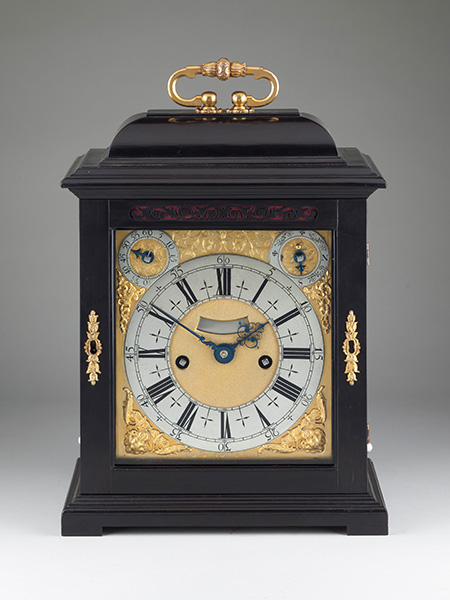
Thomas Tompion, London No. 178

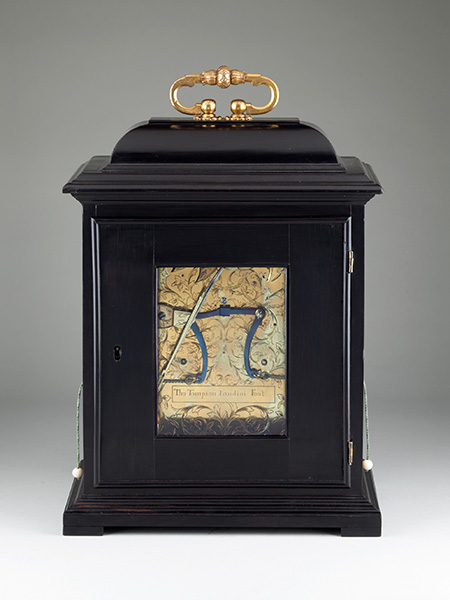
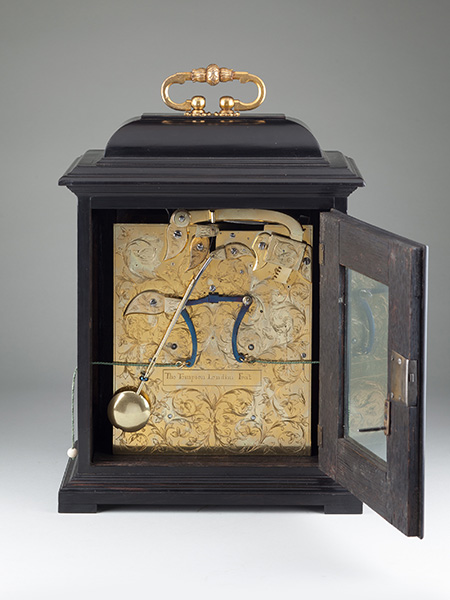
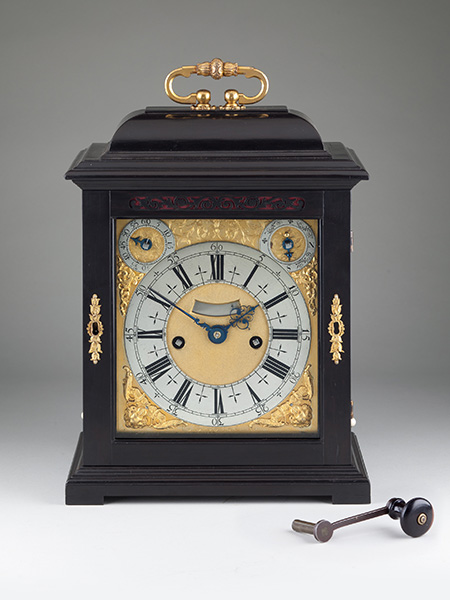
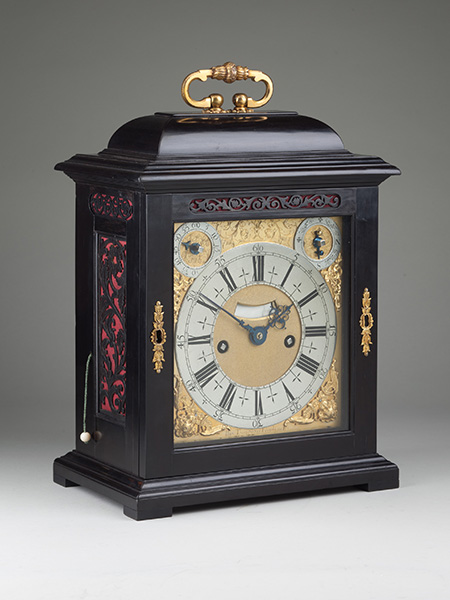
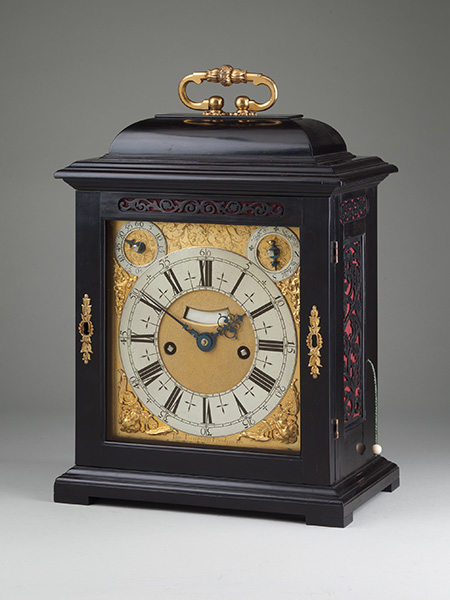
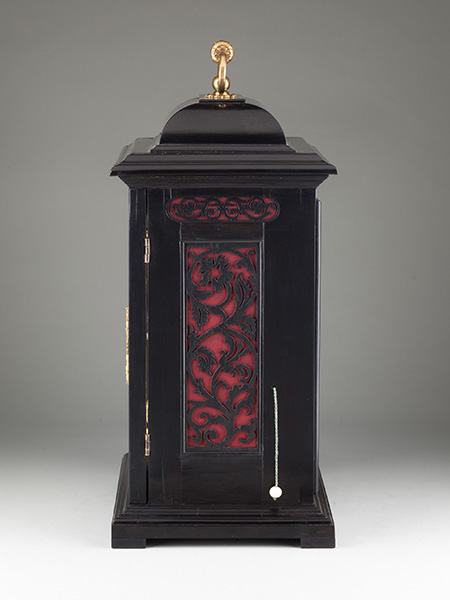
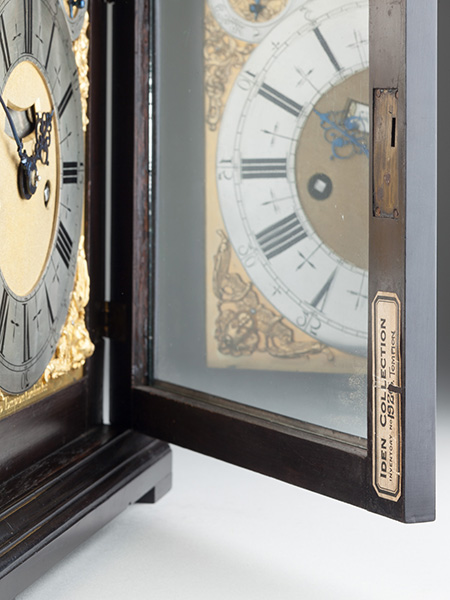
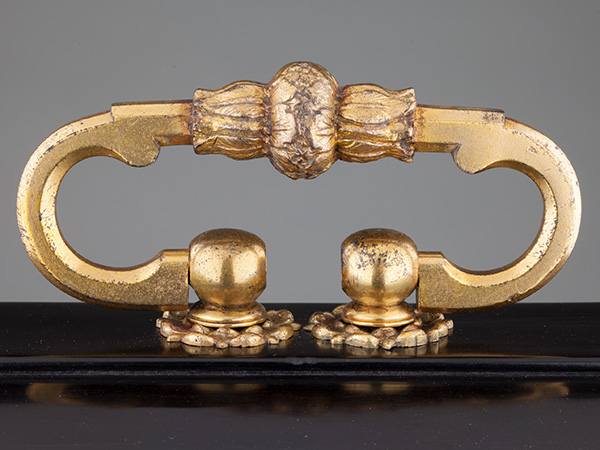
Circa 1691
Sold
13½ inches high
A superb phase II ebony striking table clock with quarter repeat. THE CASE This superbly proportioned case comprises an oak carcass with ebony veneers and mouldings. The cushion-moulded top is surmounted by a well cast gilt-brass thistle bud handle, the door is applied to both sides with Tompion’s gilt-brass bellflower escutcheons and the top rail is set with a pierced ebony sound fret; the inside of the door is pasted with the Iden Collection label reading; IDEN COLLECTION INVENTORY No. 1928 Tompion The front door sill is clearly stamped 178. The front and rear doors retain their original locks and hinges and the rear door retains the original iron ‘spur’ to help retain the pendulum whilst in holdfast position. The sides of the case have the original matching pierced ebony sound frets backed with red silks. THE DIAL The 8 inch by 7 inch dial retains its original fire gilding and is signed Tho Tompion Londini Fec at the base flanked by winged cherub spandrels, the silvered chapter ring has Roman & Arabic numerals with sword hilt half-hour and half-quarter markers, the very finely matted centre is set with a mock pendulum aperture and has fine quality pierced blued steel hour and minute hands. At the top of the dial the chapter ring is flanked by subsidiary dials for pendulum regulation and strike/silent. The three dial feet are typically latched to the inside of the front plate. THE MOVEMENT The movement has seven typical ring-turned, finned, knopped and latched pillars, the fusees and barrels have gut lines; the going train has the original pivoted verge escapement with the pendulum spring suspended in Tompion’s usual manner from a brass regulation bar atop the backplate with foliate engraved cocks. The strike train with hour strike on the original larger bell via a rack system operating on the inside of the backplate. The pull quarter repeat operates on Tompion’s all-or-nothing system with his earlier single cock and post interlocking levers on the backplate, repeating the quarters and then tripping the hours – the former on the smaller bell. THE BACKPLATE The lovely golden-coloured brass backplate is engraved with Tompion’s finest quality scrolling foliage within a line border and centred by a rectangular cartouche signed Tho: Tompion Londini Fecit. The centre base of the backplate is clearly numbered 178 above the line-engraved border. The movement is secured in the case in Tompion’s usual manner with two steel bolts through the baseboard into the bottom pillars. NOTES This is one of the finest examples of one of Tompion’s phase II table clocks that one could ever wish to own. For the case the handle and escutcheons are original, as are the side frets; the only (very lovely) replacement is the ebony fret in the front door. The dial retains its original gilding, the matting is totally flawless and the hands are original – there is absolutely nothing about the dial is not original. The movement is an astonishing survival, the verge escapement and pendulum are all original and so is the complex repeating system which is exactly as it was made when it left Tompion’s workshop. All the clocks, bars and levers on the front and backplates are original and the engraving is perfect. The movement’s brass plates have mellowed to a lovely deep golden colour that one so rarely sees as most of these clocks have been over restored at one time or another in their lives The last thing to note is the very rare iron spur on the inside of the back door. This same device can still be found on a just a few of Tompion’s other table clocks of a similar date. On closing the door the spur nestles just to the left of the pendulum rod when it is secured to the holdfast; the purpose was to give added security to the pendulum whilst it was in transit. PROVENANCE The Walter Iden collection of clocks PUBLISHED The Iden Collection, Antique Collectors’ Club, 1987, Pages 88 & 89, illustrated clock and backplate Jeremy Evans, Jonathan Carter, Ben Wright, Thomas Tompion 300 Years, page 601
